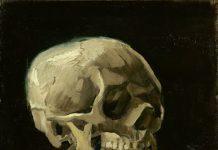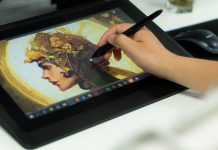In the realm of art history, the Baroque era stands as a period of dynamic transformation, marked by an explosion of artistic creativity and innovation. Among the many genres that flourished during this time, Baroque portraits hold a distinct place. Characterized by their dramatic intensity, theatrical compositions, and intricate details, Baroque portraits are a captivating reflection of the era’s social, political, and artistic aspirations. This article delves into the unique characteristics of Baroque portraits, exploring their techniques, symbolism, and the masterful artists who brought these exquisite works to life.
Table of Contents
The Essence of Drama and Grandeur
At the heart of Baroque portraits lies an unbridled desire to capture the grandeur of the individual being portrayed. The Baroque period, spanning from the 17th to the early 18th century, was marked by a shift in artistic sensibilities towards more emotional and expressive forms. Baroque portraits broke away from the static and formal compositions of earlier periods, embracing dynamic poses, theatrical lighting, and elaborate costumes to convey the sitter’s importance and personality.
Caravaggio, a pioneering Baroque artist, is often credited with initiating the trend of dramatic lighting in portraiture. His revolutionary technique of chiaroscuro, characterized by stark contrasts between light and shadow, lent an air of depth and three-dimensionality to his portraits. This technique not only added an element of drama but also highlighted the psychological depth of the subjects, revealing their inner thoughts and emotions.
Symbolism and Allegory
Baroque portraits often incorporated intricate symbolism and allegory, giving layers of meaning to the visual representation of the subject. Artists used props, costumes, and backgrounds to convey specific virtues, attributes, or social status. The Baroque fascination with allegory allowed for a more nuanced and complex narrative within a single portrait.
Peter Paul Rubens, a Flemish Baroque artist renowned for his sumptuous paintings, frequently incorporated allegorical elements into his portraits. In his work “Portrait of Susanna Lunden,” the subject is portrayed as Ceres, the Roman goddess of agriculture, symbolizing fertility and abundance. This blending of the real and the allegorical enriched the portrait’s visual impact and intellectual depth.
The Theatrical Impulse
Baroque portraits exude a theatrical quality that sets them apart from earlier artistic styles. This theatricality is expressed through dynamic poses, richly ornate clothing, and intricate settings. The subjects often appear as if they are performers on a grand stage, commanding attention and demanding admiration.
Anthony van Dyck, a Flemish Baroque painter and a prominent pupil of Rubens, was a master of capturing the theatrical essence in his portraits. His portrayal of King Charles I of England on horseback in the “Equestrian Portrait of Charles I” exemplifies this theatrical approach, with the king adorned in regal attire, riding confidently and majestically.
Exquisite Detail and Realism
Baroque portraits are characterized by their meticulous attention to detail and a commitment to rendering the physical features of the subject with remarkable accuracy. The artists of this era were skilled in portraying the textures of fabrics, the gleam of jewelry, and the subtleties of facial expressions. This commitment to realism added a touch of authenticity to the portraits, inviting viewers to intimately connect with the depicted individuals.
One of the most celebrated portraitists of the Baroque period was Diego Velázquez. His masterpiece, “Las Meninas,” showcases his unparalleled ability to capture intricate details and convey spatial depth. The painting’s complex composition, featuring a mirror reflecting the image of King Philip IV and Queen Mariana, exemplifies Velázquez’s dedication to meticulous realism and innovation.
Redefining Identity and Power
Baroque portraits played a significant role in shaping notions of identity and power during a time of political and social upheaval. Portraits served as visual records of aristocratic families, rulers, and influential figures, reflecting their status and aspirations. Through elaborate depictions, these portraits communicated messages of authority, wealth, and cultural refinement.
Anthonis Mor, a Netherlandish portraitist of the late Renaissance and early Baroque, contributed to this representation of power through his skillful execution of detailed costumes and accessories. His portrait of Philip II of Spain, adorned in rich clothing and regal jewelry, exemplifies how Baroque portraits were used to assert royal authority and magnificence.
Legacy and Influence
The legacy of Baroque portraits extends far beyond the era in which they were created. The dramatic techniques, attention to detail, and symbolic richness of Baroque portraiture left an indelible mark on subsequent artistic movements. The opulent and expressive style of the Baroque period served as a precursor to the Rococo style, which emphasized ornate decoration and delicate colors.
Furthermore, the Baroque emphasis on capturing psychological depth and the inner emotions of the sitter foreshadowed the introspective qualities that would come to define later artistic movements, such as Romanticism.
Conclusion
Baroque portraits are a testament to the artistic ingenuity and innovative spirit of the era. With their dramatic intensity, intricate symbolism, and meticulous realism, these portraits captured the essence of their subjects while shaping the visual language of subsequent generations. Baroque artists’ mastery of chiaroscuro, theatricality, and allegory laid the groundwork for a new approach to portraiture—one that celebrated individuality, power, and emotion in unprecedented ways. As we gaze upon these exquisite works today, we continue to be entranced by the captivating drama and grandeur that define Baroque portraits.








